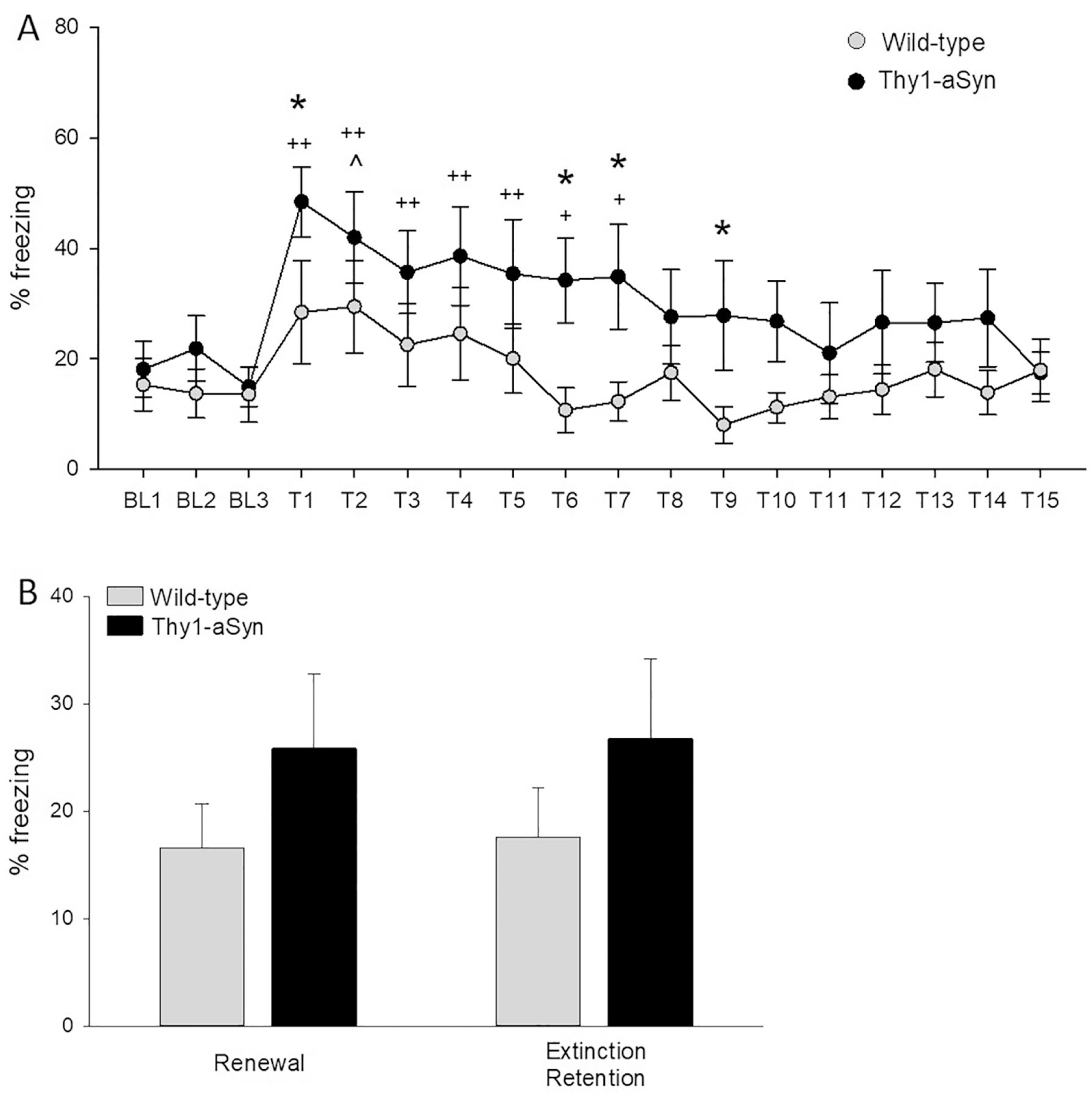Fig. 3.

A) Higher freezing in Thy1-aSyn mice (n=11) compared to wild-type (WT, n=10) persists across extinction. Means ± SEM for average % freezing during the extinction test. BL1–3, baseline recordings for 3 minutes without tone; Tone 1–15 to extinct fear response, recordings for 10 seconds after each tone. WT mice show enhanced average % freezing in response to the tone only for T2. Thy1-aSyn mice show enhanced freezing after T1–7 before reaching extinction at T8 (^p<0.05 compared to BL1 for WT; +p<0.05,++p<0.01 compared to BL1 for Thy1-aSyn mice, Fisher’s LSD). Thy1-aSyn mice showed significant increased fear response compared to WT mice after T1, T6, T7 and T9 (*p<0.05, Fisher’s LSD compared to WT). B) Renewal and extinction retention of acquired fear (average freezing time to 3 tones in Thy1-aSyn and WT mice). For fear renewal mice were placed back in context where fear was acquired (but not extinguished). For extinction retention mice were placed back in context where fear was extinguished (mean ± SEM, 2×2 RM ANOVA n.s.).
